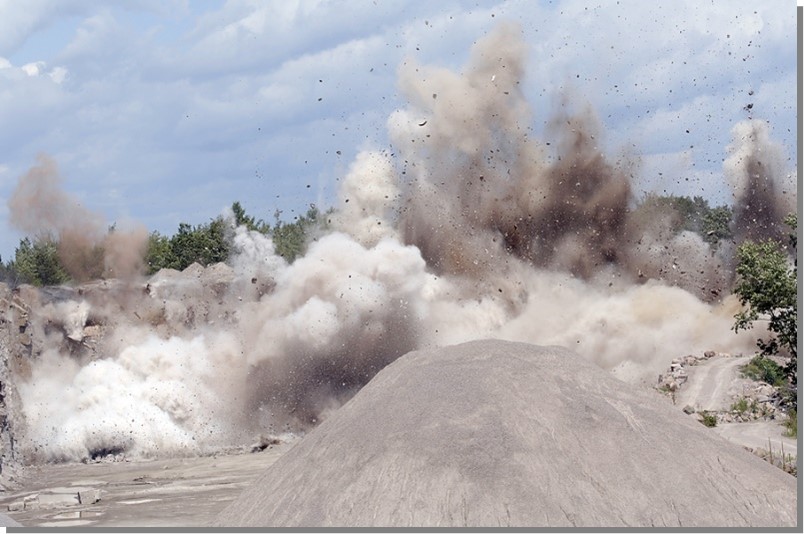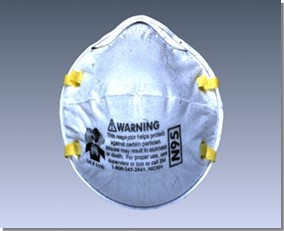Week 12: Silica Exposure Prevention
Silica, or crystalline silica, is one of the most abundant minerals on the earth, primarily found in the form of quartz. Most commonly it is found on worksites in concrete, bricks, and materials made from quartz-based rocks or sand.
Hazards of silica:
- Silica is hazardous when inhaled and can cause an incurable and potentially fatal lung disease known as silicosis.
- It can also cause lung cancer.
- Although silica can cause immediate health effects, such as shortness of breath and coughing, most health effects are seen 10 – 15 years after the initial exposure.
- It is important to note that silica is not hazardous as a solid material; it is most hazardous when it is being cut, sanded, or manipulated in a way that creates airborne dust.

Job duties with potential for silica exposure:
- The cutting, drilling, or crushing of concrete, brick, or stone
- The use of sand products, such as the following:
- Mining and quarrying
- Glass-making
- Foundry work
- Sandblasting
Recognizing the hazard:
In addition, silica may also be found in chemical mixtures. To identify silica, use the methods discussed below.
- Labeling:
- All products that contain silica must be labeled.
- Any product that contains more than 0.1% silica must be labeled by the manufacturer as hazardous when in use.
- All machines where silica is in use must be labeled with warning signs.
- Assure that labels are not removed or defaced.
- Safety data sheets (SDSs):
- Any product that contains more than 0.1% silica requires a safety data sheet.
- Manufacturers must obtain or develop a SDS for each hazardous chemical they produce or import.
- Employers must assure that employees have access to SDSs for all hazardous workplace materials
Alternatives to silica:
In particularly high-risk industries, such as sandblasting, the best way to protect from silica exposure is to eliminate the use of silica completely. Sandblasting substitutes include:
Alumaglass™ | Garnet | Starblast XL™ |
Additional construction substitutes include:
- Replacing sandstone grinding wheels with wheels that use an abrasive such as aluminum oxide.
- Using magnesite or aluminum oxide bricks in place of silica bricks in furnaces.
Engineering controls:
This type of control involves a mechanical process to eliminate exposure to silica dust and must be properly operated and maintained. These include:
- Wet methods:
- Apply water to cutting, grinding, drilling, and cleaning operations.
- Install a water hose to wet down dust at the point of generation.
- Use control nozzles that allow gentle spray.
- Use fogging and steam to reduce airborne particles.
- Wet sweeping
- Ventilation:
- If possible, enclose processes by using a ventilated glove box operation.
- Install local exhaust ventilation and assure that the dust is being pulled away from the workspace.
- Dust reduction:
- Modify abrasive operations to produce a coarser dust that settles more readily and is less likely to reach the lungs if inhaled.
- Install dust collection systems onto machines or equipment that generate dust.
- Use high efficiency particulate air (HEPA) vacuum cleaners.
- Avoid dry sweeping or blowing with compressed air.
Work practices:
Employees must be trained on the hazards associated with silica and do the following when working around silica dust:
- Wash hands and face after tasks and at the end of the workday.
- Do not eat, drink, or smoke in an area where there may be silica dust.
- All machines where silica is in use must be labeled with warning signs.
- Assure that labels are not removed or defaced.

Respirators:
If the hazard cannot be reduced with local exhaust ventilation or similar methods of control, the use of respiratory protection may be appropriate to reduce exposure to silica.
- Assure that respirators are appropriate for the type of work and concentration of airborne silica.
- All employees must receive respirator training, medical evaluation, and fit testing prior to working with a respirator.
Respirators (continued):
- Select respirators in accordance with national standards:
- For sandblasting, use positive pressure abrasive blasting respirators.
- For other operations, use a respirator approved for protection against crystalline silica-containing dust.
- Do not alter the respirator in any way.
- Disposable respirators must be disposed of if soiled, damaged, or no longer functioning.
- If using tight-fitting respirators, do not grow a beard or mustache. Facial hair is not permitted when using the face-to-face piece seal.
Protective clothing:
The purpose of protective clothing is to prevent the contamination of regular clothing and the transportation of silica-containing materials from the workplace.
- Change into disposable or washable work clothes at the worksite.
- Shower and change into clean clothing before leaving the worksite and before participating in any activity such as eating or drinking.
- Clothing that is contaminated with silica dust must not be worn home without cleaning.
Medical examinations:
Any employee who breathes in crystalline silica dust requires a medical examination prior to beginning work and every three years that includes the following:
- Chest x-ray
- Classification of radiographs of pneumoconiosis
- Pulmonary function test, such as spirometry
- Annual evaluation for tuberculosis (TB)
Always review the hazards of any silica substitute and complete a new hazard assessment for control approaches.
